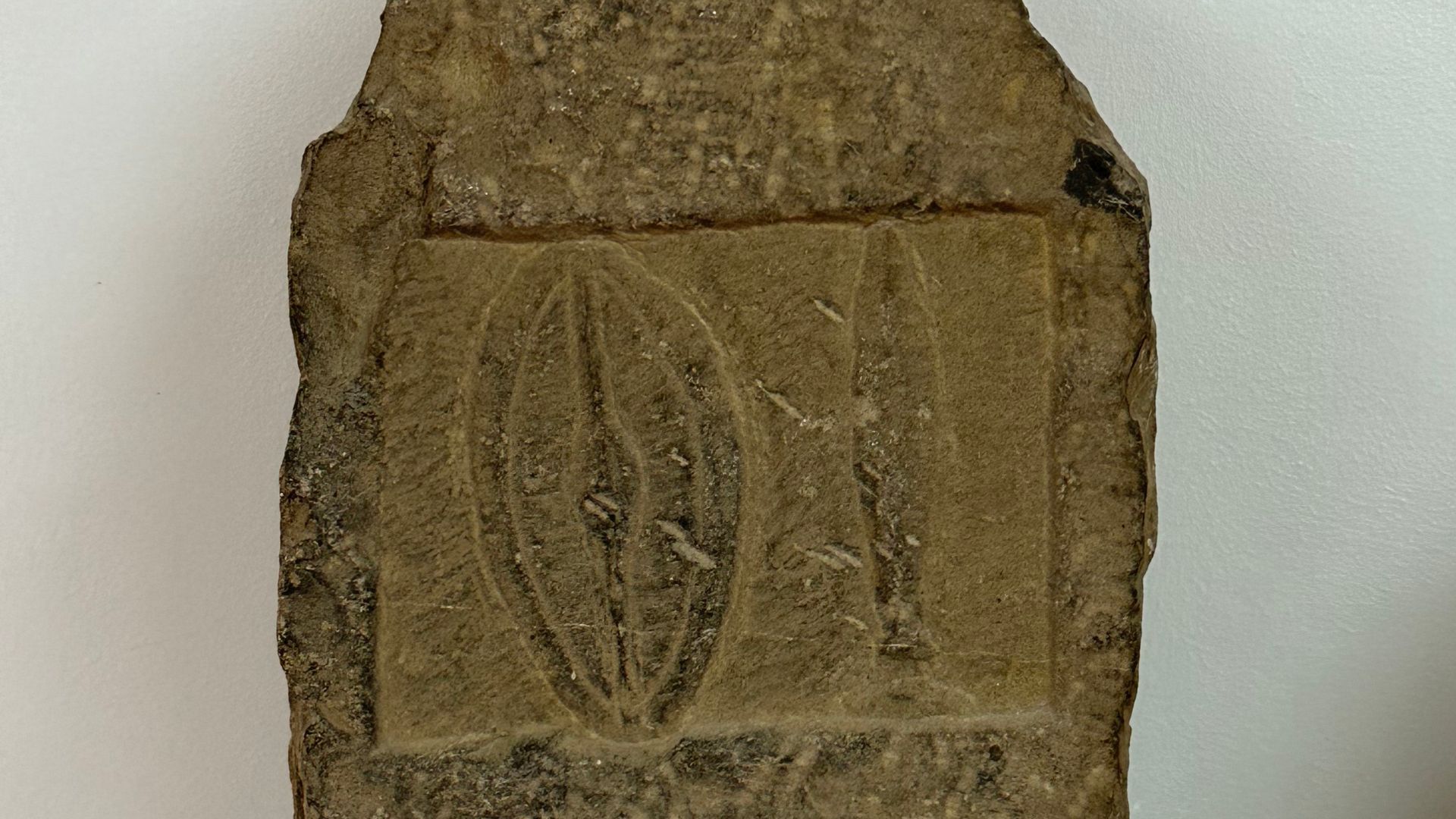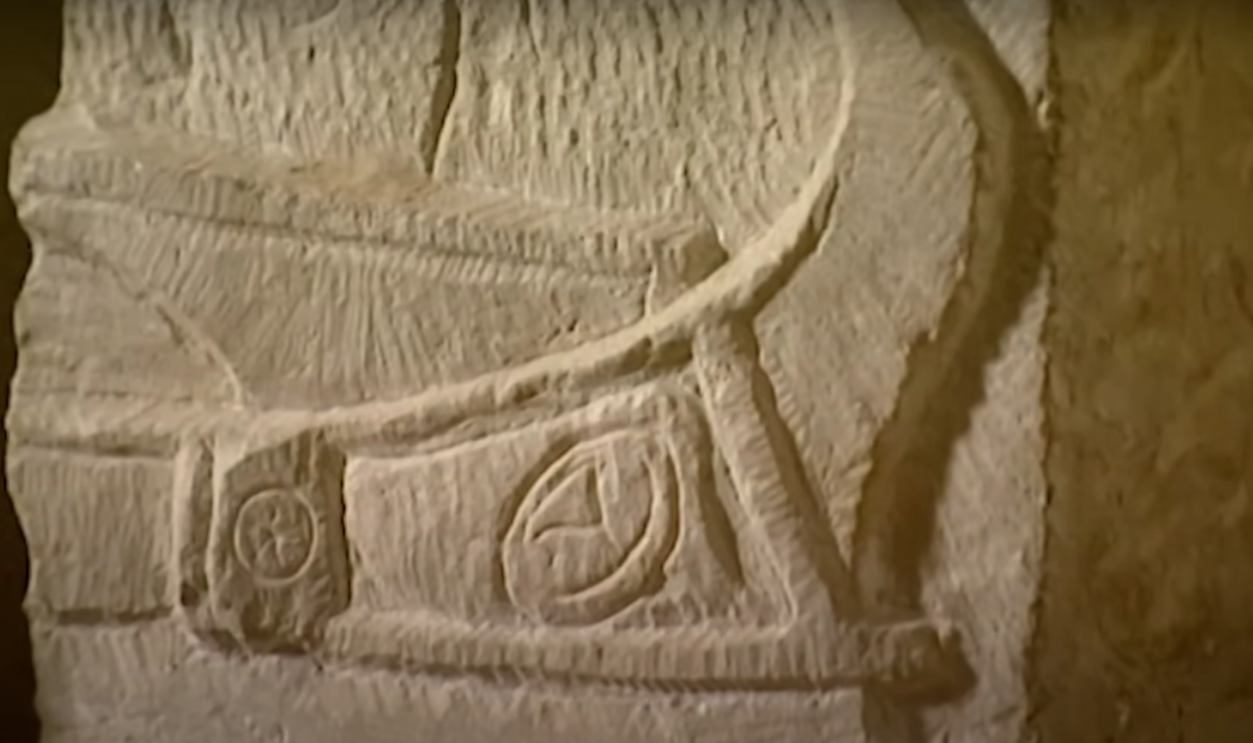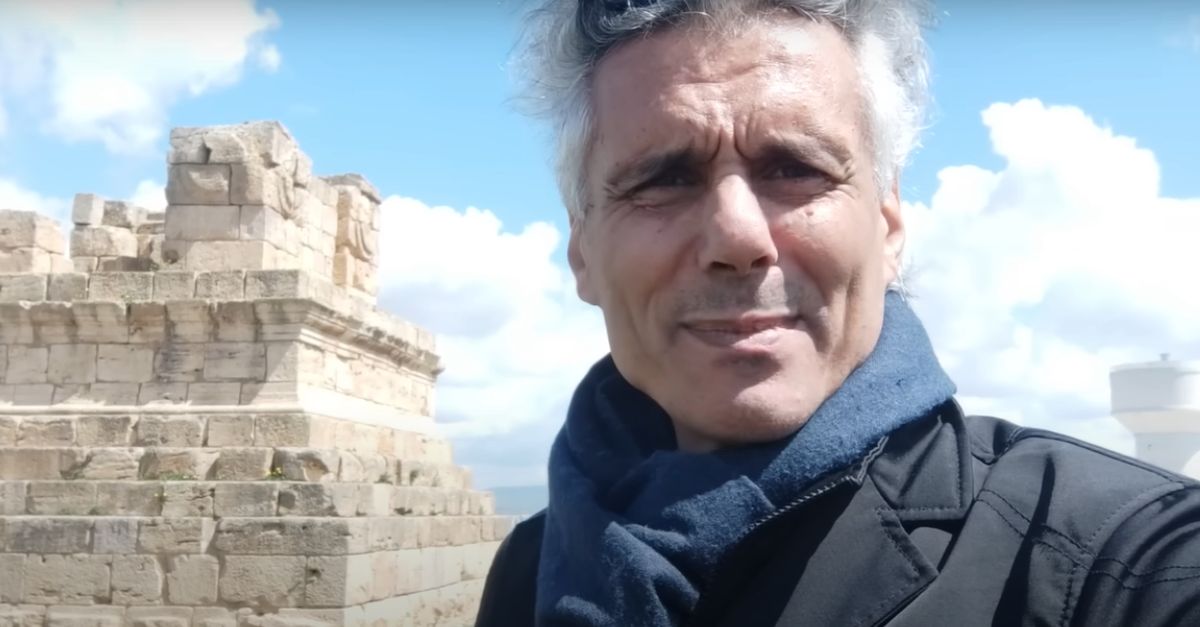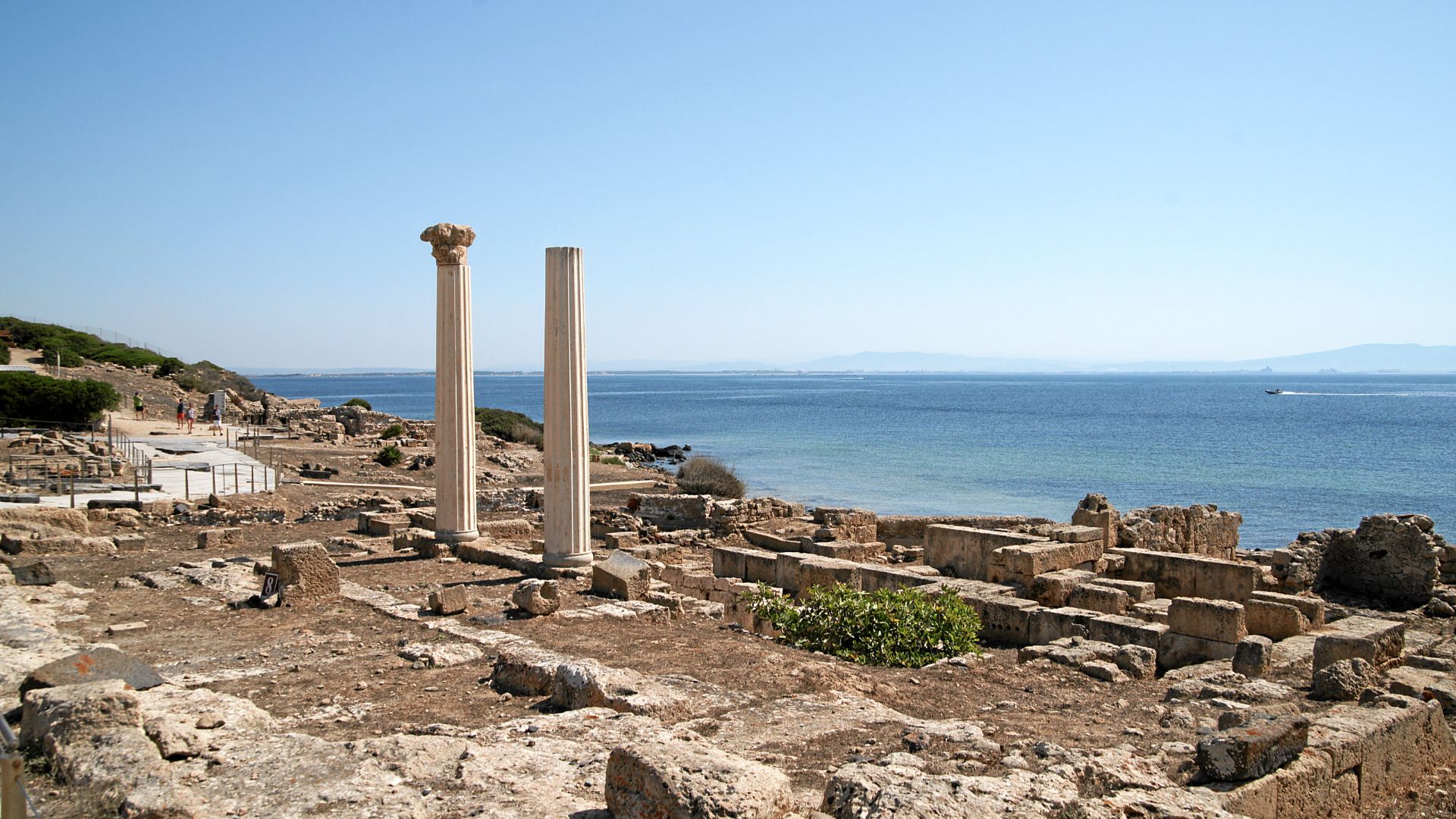Stone Testimonies Of A Forgotten Civilization
Thousands of years ago, ancient Punic communities engraved their most intimate beliefs and legacies onto stone slabs. What hidden truths can these remarkable steles uncover about the ancient world?

Discovering The Cirta Steles
Archaeologists and history enthusiasts were dazzled after an unexpected discovery in Constantine, Algeria. Remarkable funerary stones were scattered across the region to reveal a wealth of information about the Punic society in North Africa. With nearly 1,000 inscriptions, they offer an unparalleled glimpse into ancient cultural practices and beliefs.
 Habib kaki, CC0, Wikimedia Commons
Habib kaki, CC0, Wikimedia Commons
What Are The Cirta Steles And Why Do They Matter?
The Cirta steles are large stone monuments engraved with Punic inscriptions that date back to the 2nd century BCE. These stones were used as memorials to honor the dead and offer critical insights into Punic burial rituals and religious practices. Their significance extends far beyond simple gravestones, preserving a rich historical legacy.
 Onceinawhile, CC BY-SA 4.0, Wikimedia Commons
Onceinawhile, CC BY-SA 4.0, Wikimedia Commons
The Rich History Of Constantine, Algeria
Constantine, once known as Cirta, has a complex history shaped by many civilizations. From Punic and Roman to Ottoman influences, the city has long been a crossroads of culture. This layered past is reflected in its archaeological sites, where ancient monuments like the Cirta steles serve as powerful reminders of its diverse heritage.
 Maghnia-algeria, CC BY-SA 4.0, Wikimedia Commons
Maghnia-algeria, CC BY-SA 4.0, Wikimedia Commons
A Lasting Legacy
Rooted in the ancient Phoenician civilization, the Punic culture left a unique mark on North Africa. Despite the fall of Carthage, Punic customs and traditions continued to thrive in places like Constantine. The Cirta steles honor this enduring cultural presence by preserving languages and artistic expressions long after Carthage’s destruction.
 Carole Raddato from FRANKFURT, Germany, CC BY-SA 2.0, Wikimedia Commons
Carole Raddato from FRANKFURT, Germany, CC BY-SA 2.0, Wikimedia Commons
The Role Of Steles In Ancient Funerary Traditions
In the ancient world, steles served more than just as tombstones. They were symbolic representations of the deceased’s life and status. For the Punics, they were vital in funeral rites, often inscribed with names and prayers, providing a personal connection to the spiritual world.
 Reda Kerbush, CC BY-SA 4.0, Wikimedia Commons
Reda Kerbush, CC BY-SA 4.0, Wikimedia Commons
Connecting Carthage To North Africa
The Punic script, a derivative of the ancient Phoenician alphabet, was widely used across North Africa, especially in Carthage and its territories. Found on the Cirta steles, this writing system links the region directly to Carthage with strong evidence of its linguistic legacy. These inscriptions reveal the continuity of Punic culture even after Carthage's fall.
 Jean-Jacques Barthelemy, 1758, Wikimedia Commons
Jean-Jacques Barthelemy, 1758, Wikimedia Commons
Unlocking The Secrets Of The Punic Inscriptions
Those inscriptions on the Cirta steles are windows into the past. Archaeologists and linguists have worked tirelessly to decode these ancient texts, uncovering information about the people who created them and their customs. Each inscription holds a story that helps us explore the mysteries of Punic life.
 Reda Kerbush, Wikimedia Commons
Reda Kerbush, Wikimedia Commons
How Many Steles Were Discovered In Cirta?
Nearly 1,000 steles have been discovered in and around Constantine, which makes this find one of the largest collections of Punic inscriptions. They vary in size and design, but all are significant in understanding the region's history. Their discovery has provided a comprehensive picture of ancient Punic society and its funerary practices.
 Reda Kerbush, CC BY-SA 4.0, Wikimedia Commons
Reda Kerbush, CC BY-SA 4.0, Wikimedia Commons
The Uniqueness Of Punic Funerary Stones
Carved with intricate details, these stones reflect the artistic skills of the Punic people. From simple inscriptions to elaborate designs, the steles showcase the cultural importance of funerary art in Punic society by offering a tangible connection to their belief systems.
 Reda Kerbush, CC BY-SA 4.0, Wikimedia Commons
Reda Kerbush, CC BY-SA 4.0, Wikimedia Commons
The Influence Of Carthage On Cirta’s Development
Carthage, once a mighty empire, left a lasting imprint on the development of cities like Cirta. The Punic settlers in Constantine brought with them architectural styles and religious practices that shaped the city's growth. The Cirta steles are evidence of this enduring Carthaginian influence, blending local traditions with Punic customs.
 damian entwistle, CC BY-SA 2.0, Wikimedia Commons
damian entwistle, CC BY-SA 2.0, Wikimedia Commons
Who Were The People Behind The Inscriptions?
The individuals behind the inscriptions on the Cirta steles were likely members of the Punic elite—wealthy, influential families who commissioned these stones to honor their ancestors. The steles provide a rare glimpse into their identities. They showed their roles within society and their connection to the broader Punic world.
 Onceinawhile, CC BY-SA 4.0, Wikimedia Commons
Onceinawhile, CC BY-SA 4.0, Wikimedia Commons
What The Inscriptions Reveal
Nobles, priests, and wealthy landowners are frequently mentioned, often accompanied by honorifics and titles that reflect their high status. These inscriptions help paint a vivid picture of the elite class and their influence on local affairs. They also make us understand how society worked.
Exploring The Social Hierarchy In Ancient Cirta
By analyzing the names and familial connections listed, historians can trace social mobility. Scientists can better understand the power dynamics and roles of various individuals in this old town. This information sheds light on how status and influence shaped life in ancient Cirta.
Religious Beliefs Captured In Stone
Religion played a pivotal role in Punic culture, and the Cirta steles reflect this deeply. Many inscriptions reference gods and religious symbols that were central to spirituality. These references reveal the strong connection between death and divine favor, highlighting the importance of religious rites in Punic burial customs.
What Gods And Deities Appear On The Inscriptions?
The inscriptions on the Cirta steles frequently mention deities from the Punic pantheon, including Baal-Hammon and Tanit, revered as the chief god and goddess of Carthage. These deities represent fertility and protection. Their presence on funerary stones highlights the deep spiritual beliefs about the afterlife in Punic culture.
 Bardo National Museum, CC BY-SA 4.0, Wikimedia Commons
Bardo National Museum, CC BY-SA 4.0, Wikimedia Commons
Punic Religion In North Africa
Punic religion in North Africa was centered around the worship of various deities, with a particular focus on fertility and agriculture. The Cirta steles offer a glimpse into this religious framework, where inscriptions often include invocations to gods. They show how these rituals were carried out during the Punic era.
 Archaeology Museum of Catalonia (Barcelona), Wikimedia Commons
Archaeology Museum of Catalonia (Barcelona), Wikimedia Commons
Connections Between Punic Settlers And Indigenous Berbers
In North Africa, the Punic presence wasn't isolated. It intertwined with indigenous Berber cultures. The Cirta steles reflect this cultural fusion, as some inscriptions include Berber names or incorporate local religious symbols alongside Punic elements. This blending of traditions highlights the dynamic and often harmonious relationship between the Punics and the Berbers.
 GIRAUD Patrick, CC BY-SA 2.5, Wikimedia Commons
GIRAUD Patrick, CC BY-SA 2.5, Wikimedia Commons
A Window Into The Past
The steles are rich in symbolism, with carvings and motifs that offer insight into common beliefs and customs. From geometric patterns to depictions of animals and divine figures, these symbols reveal how the Punic people viewed life and the cosmos. The intricate designs offer a visual representation of their spiritual worldview.
 GIRAUD Patrick, CC BY-SA 2.5, Wikimedia Commons
GIRAUD Patrick, CC BY-SA 2.5, Wikimedia Commons
With A Cultural Contrast
Transitioning from Punic to Roman rule in North Africa also marked a shift in language. While Latin became dominant under foreign control, the Punic language persisted for centuries, as seen in the inscriptions on the Cirta steles. This linguistic continuity offers a fascinating look at how language can bridge cultural transitions and preserve identities.
 Papageizichta, CC BY-SA 3.0, Wikimedia Commons
Papageizichta, CC BY-SA 3.0, Wikimedia Commons
Understanding Punic Mortuary Practices
With key insights into Punic mortuary customs, the inscriptions often include prayers for the deceased’s journey to the afterlife. They offer a glimpse into the ritualistic practices that governed death and burial. Such practices were deeply mixed with the Punic belief system, emphasizing respect for ancestors and divine protection.
 Mark Lidzbarski, Wikimedia Commons
Mark Lidzbarski, Wikimedia Commons
Everyday Life In Punic North Africa: What We Learn
The Cirta steles also offer valuable clues about the everyday lives of the Punic people. Beyond names and titles, some inscriptions reveal familial relationships and community ties. These details paint a fuller picture of life in Punic North Africa and illustrate how ordinary people engaged with the broader cultural and religious life.
Evidence Of Punic Trade And Economy
Research shows that the Punic world was defined by its extensive trade networks, and the Cirta steles subtly reflect this economic prosperity. Inscriptions mention connections to merchants and artisans, highlighting the importance of commerce in Punic society. These steles testify to the region’s thriving economy and trade routes.
And Cultural Continuity
Even after the fall of Carthage, Punic cultural traditions endured in regions like Constantine. The Cirta steles stand as evidence of this continuity by showcasing how aspects of Punic social practices persisted despite Roman dominance. Thanks to this resilience, we can understand more about the adaptability of the Punic identity.
Roman Conquest And The Fate Of The Cirta Steles
The Roman conquest of North Africa in 146 BCE marked a dramatic shift in the region’s culture and governance. Despite the rise of Roman influence, many Punic traditions, including the use of steles, continued to persist in cities like Constantine.
The Enduring Influence Of Punic Culture After Carthage’s Fall
After the fall of Carthage, Punic culture adapted and survived. The Cirta steles reflect this cultural endurance, preserving elements of the Punic language and social structure. These monuments offer a rare window into how traditions were maintained despite imperialism.
Constantine's Role Under Roman Rule
As Constantine became a key Roman city in North Africa, it retained significant cultural ties to its Punic past. The city’s location made it a significant part of the Roman Empire’s African provinces. However, Constantine’s ongoing connection to Punic customs, especially through the Cirta steles, demonstrates its layered historical identity.
 Jan Janssonius, Wikimedia Commons
Jan Janssonius, Wikimedia Commons
Romanization In Algeria
While Romanization gradually took hold throughout Algeria, the legacy of the Punics remained evident in the region. The continued use of Punic language and customs, particularly in the form of the Cirta steles, highlights the enduring legacy of Punic culture within the Romanized society. This hybridization of cultures shaped the region's unique character.
 Pradigue, CC BY-SA 3.0, Wikimedia Commons
Pradigue, CC BY-SA 3.0, Wikimedia Commons
How Constantine Became A Cultural Crossroads
Constantine’s position as a cultural crossroads in Roman North Africa allowed it to be a meeting point for various civilizations, including the Punics, Romans, and Berbers. The Cirta steles are emblematic of this fusion, containing elements from each culture. This unique blend made Constantine a vital, diverse hub for trade, politics, and religion.
 --DooFi (talk), CC BY-SA 3.0, Wikimedia Commons
--DooFi (talk), CC BY-SA 3.0, Wikimedia Commons
Preserving The Steles Through Centuries
The Cirta steles have withstood centuries of natural and human challenges, from erosion to looting. Their preservation is a triumph of archaeology and conservation as it allows modern scholars to piece together the past. They offer a rare, tangible link to the ancient world and hold cultural and historical information for future generations.
 Jona Lendering, CC0, Wikimedia Commons
Jona Lendering, CC0, Wikimedia Commons
Modern Archaeological Finds In Constantine
Recent archaeological excavations in Constantine have uncovered other significant Punic and Roman-era artifacts. These findings contribute to a deeper and better understanding of the region’s ancient history by shedding light on how the Punics lived and worshiped. The ongoing discoveries continue to enrich our understanding of North African antiquity.
The Archaeological Significance Of The Cirta Steles
The Cirta steles hold immense archaeological value and offer scholars a unique glimpse into Punic practices and social structures. These stones belong to one of the largest collections of Punic inscriptions found in North Africa and provide vital context for understanding the cultural dynamics of the region during a pivotal time in history.
 Jona Lendering & Marco Prins, CC0, Wikimedia Commons
Jona Lendering & Marco Prins, CC0, Wikimedia Commons
Challenges And Breakthroughs
Decoding the Punic inscriptions on the Cirta steles has been a complex and ongoing challenge for archaeologists and linguists. The language, though similar to Phoenician, contains regional variations that required detailed analysis. However, breakthroughs in translation have slowly unlocked the messages contained within these ancient texts, revealing valuable historical insights.
 What Was Ancient Carthage Like At Its Peak? | Metropolis by Timeline - World History Documentaries
What Was Ancient Carthage Like At Its Peak? | Metropolis by Timeline - World History Documentaries
Why The Cirta Steles Are Vital To Understanding Ancient History
The Cirta steles are essential for understanding the broader narrative of ancient North Africa. They not only provide insights into religious beliefs and daily life, but they also bridge the gap between the Punic and Roman periods. Their preservation allows modern audiences to connect with a civilization long thought lost.
 Onceinawhile, CC BY-SA 4.0, Wikimedia Commons
Onceinawhile, CC BY-SA 4.0, Wikimedia Commons
Symbols Of Punic Identity
Reflecting this culture’s values, the Cirta steles serve as powerful symbols of Punic identity and artistic expression. They were more than mere commemorations of the dead—they reinforced the cultural continuity of the Punics by preserving their language and familial ties, even in the face of Roman colonization.
 What Was Ancient Carthage Like At Its Peak? | Metropolis by Timeline - World History Documentaries
What Was Ancient Carthage Like At Its Peak? | Metropolis by Timeline - World History Documentaries
More Than Just Monuments
The Cirta steles are cultural artifacts that represent the complex worldview of the Punic people. They tell stories of personal legacy and societal norms, offering a multidimensional perspective on life and the afterlife in the Punic world.
 What Was Ancient Carthage Like At Its Peak? | Metropolis by Timeline - World History Documentaries
What Was Ancient Carthage Like At Its Peak? | Metropolis by Timeline - World History Documentaries
What Can We Learn About Punic Burial Rituals?
Punic burial rituals, as evidenced by the Cirta steles, were steeped in religious significance. These inscriptions often include prayers and messages of hope for the deceased’s journey into the afterlife. The steles reveal how death was perceived as a transition rather than an end, with a strong emphasis on divine favor.
 Onceinawhile, CC BY-SA 4.0, Wikimedia Commons
Onceinawhile, CC BY-SA 4.0, Wikimedia Commons
The Steles And Their Connection To Ancient Cemeteries
They were not isolated artifacts but part of larger funerary complexes. Found within ancient cemeteries, these steles were arranged to honor the deceased and establish a sacred connection to the divine. Their placement in these cemeteries highlights the importance of community, ritual, and remembrance in Punic culture.
 What Was Ancient Carthage Like At Its Peak? | Metropolis by Timeline - World History Documentaries
What Was Ancient Carthage Like At Its Peak? | Metropolis by Timeline - World History Documentaries
Preserving The Language Through Inscriptions
Invaluable in preserving the Punic language, the steles still had largely fallen out of use after Carthage’s destruction. The inscriptions on these stones offer a rare record of a language once spoken by millions. They serve as a key source for understanding the evolution of the Punic culture into its later forms and its survival in remote areas.
 What Was Ancient Carthage Like At Its Peak? | Metropolis by Timeline - World History Documentaries
What Was Ancient Carthage Like At Its Peak? | Metropolis by Timeline - World History Documentaries
How The Steles Illuminate The Region's Ancient Culture
The Cirta steles provide a unique lens into the culture of ancient North Africa. Beyond religious and funerary practices, the inscriptions reveal the values and worldviews of the Punic people. Through these stones, we learn about their reverence for ancestors and their connection to both the divine and the natural world.
 What Was Ancient Carthage Like At Its Peak? | Metropolis by Timeline - World History Documentaries
What Was Ancient Carthage Like At Its Peak? | Metropolis by Timeline - World History Documentaries
Lessons From The Cirta Steles
These artifacts offer profound insights into the spiritual lives of the Punic people. Many of the inscriptions reference gods and beliefs centered around death and the afterlife. They teach us about the Punic understanding of life beyond the grave, showing how religion shaped daily life and the way the dead were honored.
 What Was Ancient Carthage Like At Its Peak? | Metropolis by Timeline - World History Documentaries
What Was Ancient Carthage Like At Its Peak? | Metropolis by Timeline - World History Documentaries
The Cirta Steles As A Key To Punic History
Essential for understanding Punic history, the steles encapsulate both personal and societal elements of this ancient culture. They serve as historical documents, recording not just names and titles but also the cultural and social priorities of the Punic people. They fill gaps in our knowledge of this fascinating civilization.
 What Was Ancient Carthage Like At Its Peak? | Metropolis by Timeline - World History Documentaries
What Was Ancient Carthage Like At Its Peak? | Metropolis by Timeline - World History Documentaries
What’s Next For The Cirta Steles?
While much has been uncovered, ongoing archaeological work in Constantine promises even more revelations about the Cirta steles. New technologies and methodologies, such as digital mapping and advanced linguistic analysis, may yield further insights into the inscriptions, deepening our understanding of Punic society and its legacy in North Africa.
 What Was Ancient Carthage Like At Its Peak? | Metropolis by Timeline - World History Documentaries
What Was Ancient Carthage Like At Its Peak? | Metropolis by Timeline - World History Documentaries
Why Ancient Funerary Stones Continue To Fascinate
Ancient funerary stones like the Cirta steles continue to capture the imagination of archaeologists and the public. They are not just physical markers of death; they are complex symbols of culture and memory. Their intricate designs and profound inscriptions offer timeless glimpses into the ancient world that still resonate today.
 Reda Kerbush, CC BY-SA 4.0, Wikimedia Commons
Reda Kerbush, CC BY-SA 4.0, Wikimedia Commons
Unlocking The Mysteries Of A Lost World
More than relics of a bygone era, the steles are the key to unlocking the mysteries of a lost world. By carefully studying these ancient stones, we gain access to the thoughts and practices of the Punic people. They stand as silent witnesses to a rich civilization that continues to offer us invaluable lessons from the past.
 What Was Ancient Carthage Like At Its Peak? | Metropolis by Timeline - World History Documentaries
What Was Ancient Carthage Like At Its Peak? | Metropolis by Timeline - World History Documentaries
















